Different Story types in Tableau
When I was preparing for my Tableau Desktop Certified Professional exam, I realised I’ve built a lot of dashboards, but never really created a proper Story. In my search for information I came across this video that explains how to design engaging data stories in Tableau. Turns out there are a lot of different Story types you can create in Tableau!
With the Tokyo Olympic Games being only weeks away, I thought it would be a good exercise to recreate these seven different types of Stories, using a dataset with historical data of the Olympics.
So if you are preparing for you Certified Professional exam, or just want to get hyped for the Games, please have a look at the seven Stories below.
1. Change over Time
With this type of Story you have a clear beginning, middle and end that you can show. The call for explanations is clear: why am I seeing these changes in this specific point in time? In this example I’ve looked at the number of male vs female athletes that competed in the Games over the years.
View this Story here: Change over Time
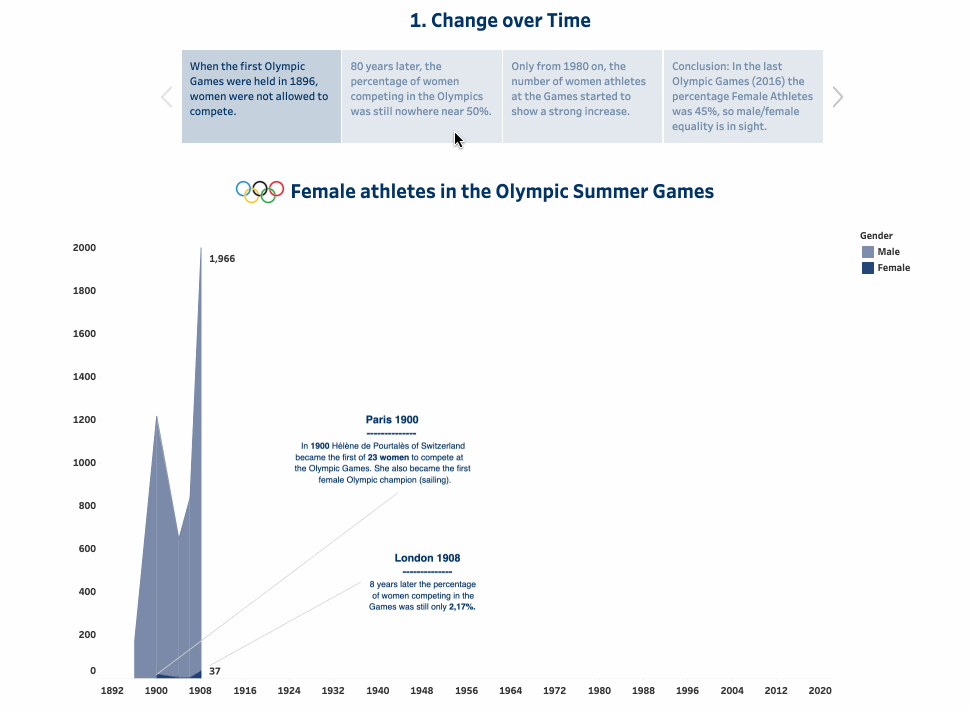
2. Drill Down
With this Story type you start you story at a high level and continue to drill down to more detailed levels. For example: Medals won globally > Medals won by European countries > Medals won by Russia.
View this Story here: Drill Down
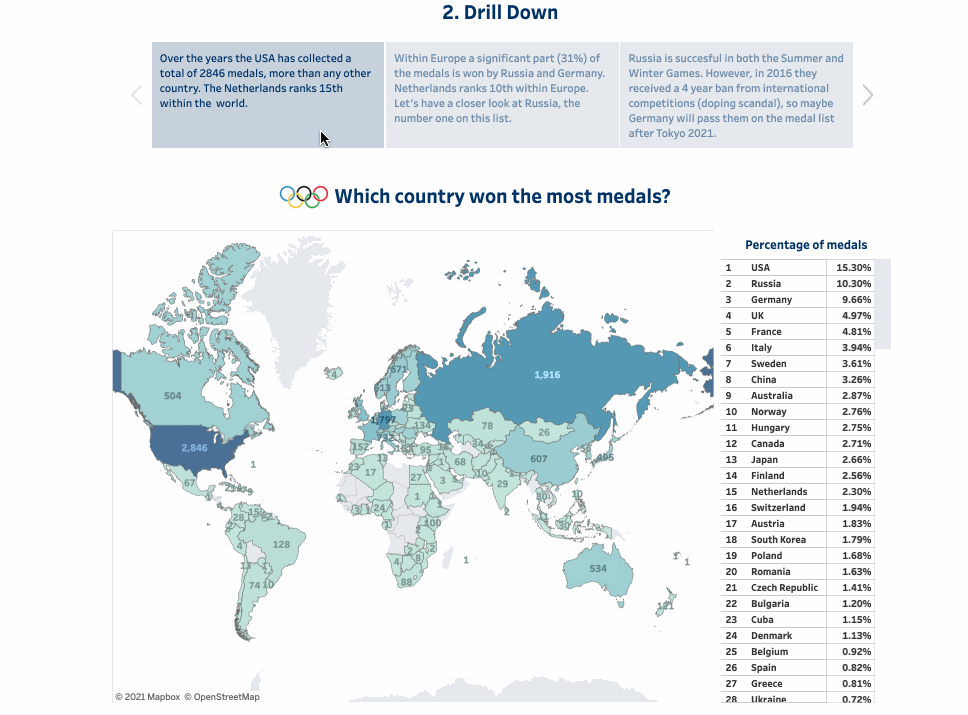
3. Zoom Out
The opposite of the Drill Down is the Zoom Out. Start at a more detailed level and zoom out to end high over. In this example: Medals won by Dutch speed skaters > Medals won by different countries in speed skating > Top medal winning country for each sport.
View this Story here: Zoom Out
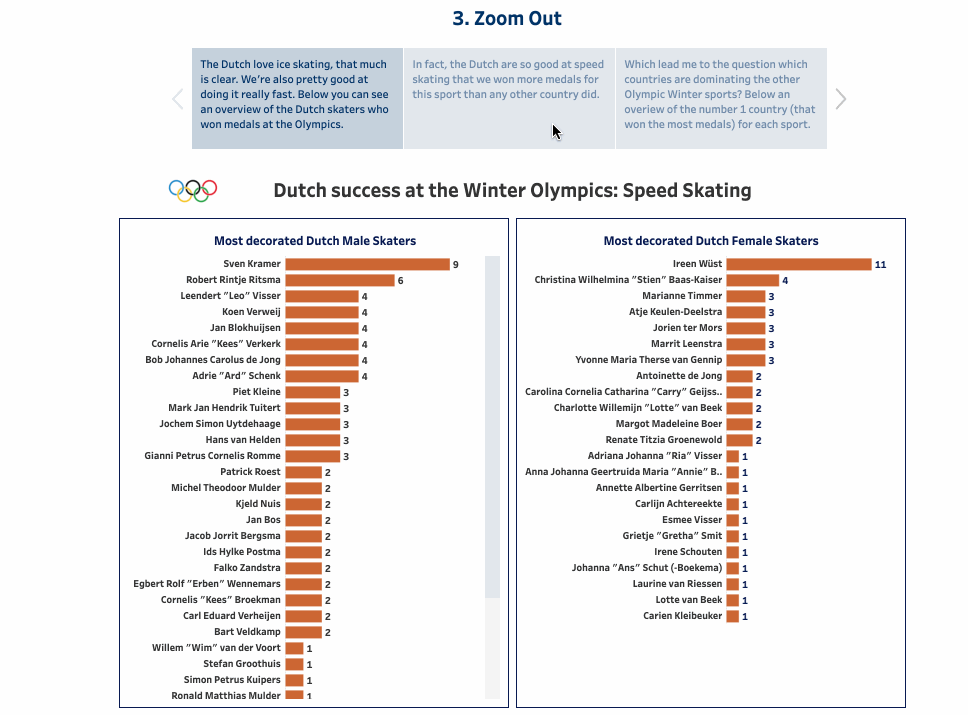
4. Contrast
In this next Story type you can compare one thing to the other. Compare for example the top 25 to a bottom 25 countries on the medal list, and see how this relates to the top 25 countries with the highest GDP compared to the bottom 25 countries with the lowest GDP.
View this Story here: Contrast
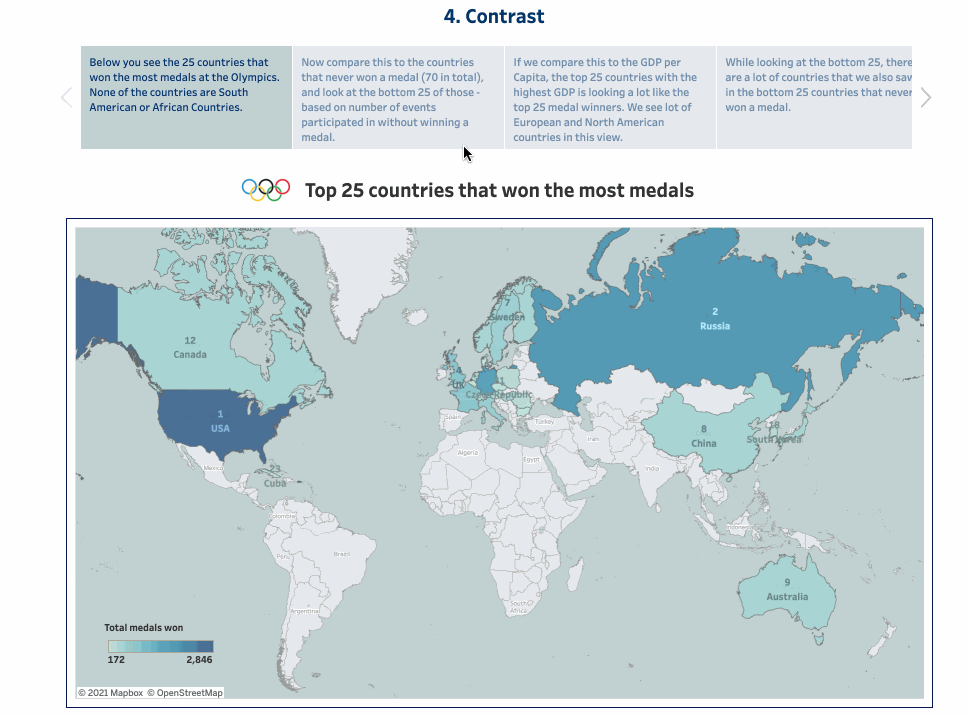
5. Intersections
The fifth Story type in Tableau, Intersections, allows you to take a look at when one trend/value surpasses the other. In this example we look at which Region won the most medals at the Olympics, and try to explain why in some years one Region will surpass the other.
View this Story here: Intersections
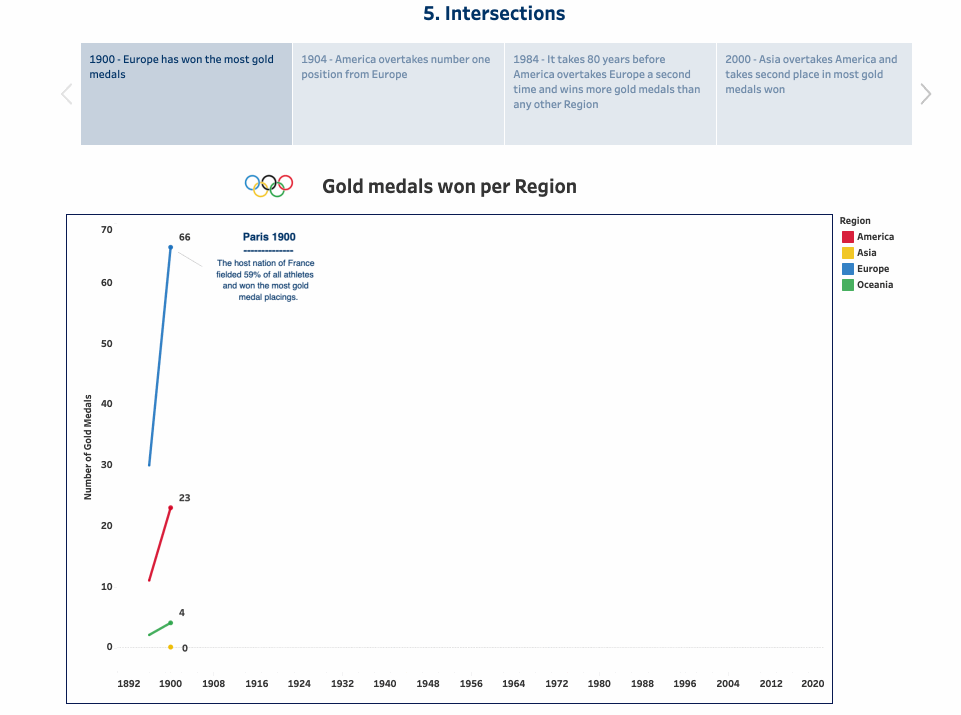
6. Factors
What factors contribute to your datapoints? What trends do you see for these factors? Factors is a bit like a Drill Down while still looking at the same data; you break down your datapoint into different factors. In this we have a look at Medals won by The Netherlands, broken down by gender.
View this Story here: Factors
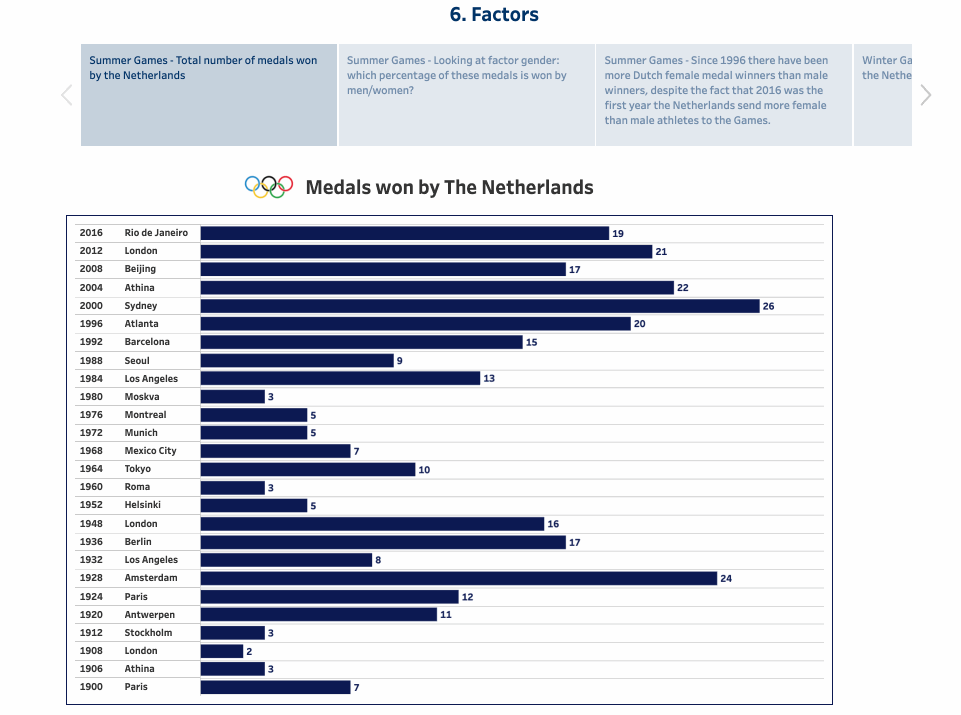
7. Outliers
Last but not least: outliers! A good way to show outliers is by using a box plot. Investigate your data and look for datapoints that differ a significant amount from the rest. For this last Story Type I looked at the age of the medal winners and found both high and low outliers.
View this Story here: Outliers
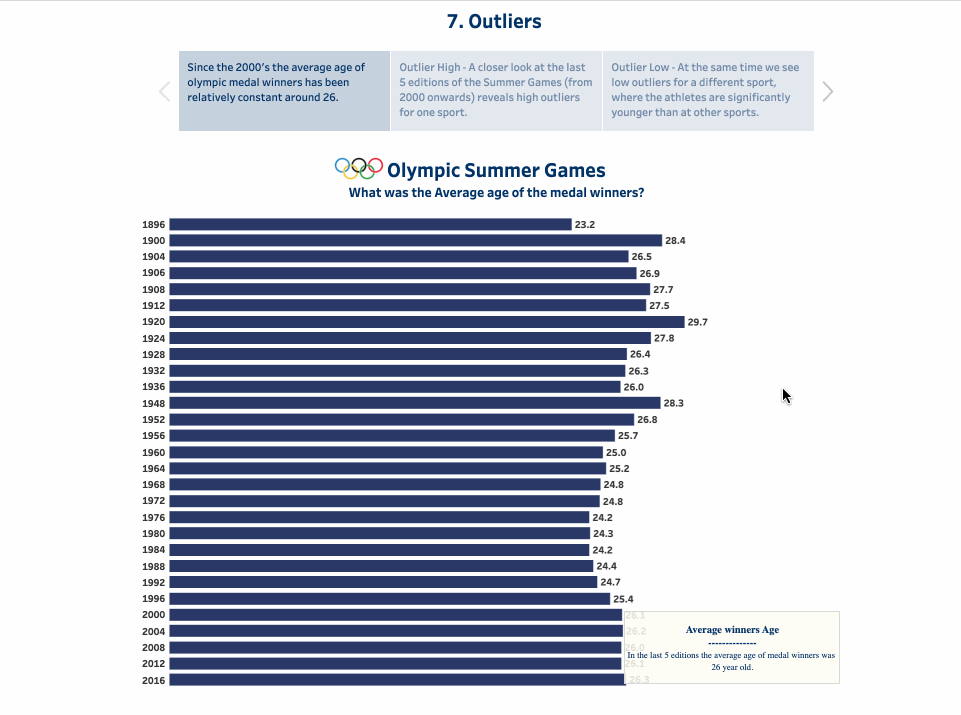
I hope this blog helped you getting familiar with different Story types in Tableau. Do you feel like you need more help to improve your Tableau skills? Have a look at our training sessions.


